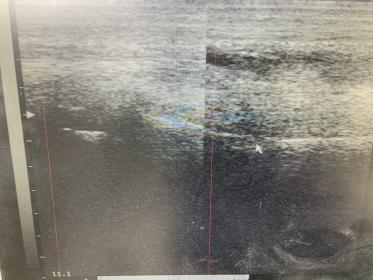My experience with not quite the same injury (no tear, chronic inflammation of LH suspensory)… These can take forever to heal. I like the idea of consulting with a second vet. Mine ended up having surgery and PRP, and I did not ride her for about 9 months. Then long, slow rehab, and while we didn’t return to much jumping, she did fine as a low level dressage horse and trail horse for several years, and now, 9 years later, is doing fine as a trail and “putzing around” horse at age 21. Had I been a serious competitor, I probably would have retired her not too long after rehab, because she wasn’t going to hold up to hard work.
Some tips:
Sedatives are your friends, especially if your horse is antsy in the stall. Mine was on Ace for early rehab and hand walking, at first in turnout, and then when I started riding her (although we didn’t need Ace for more than a couple of weeks.) Ditto extra control via a rope halter or chain over the nose. You need to keep your horse’s feet on the ground.
If you have an area very close to the barn where you can hand graze your horse, and you can get him there and back without any tight turns, that’s a good thing. But check with your vet. I was hand-walking my mare starting 5 days post-surgery, for 5 minutes, 2 and then 3 times a day (barn staff were very helpful here and I paid them for it.) Hand walks gradually increased to 45 minutes once or twice a day by about 4 months post-surgery.
I agree 100% on walking being on hard ground only, and flat to start with.
If you ever have a sense that what you’re doing is “too much,” listen to it. Patience is a virtue.
Shoes vs. not probably depends on the horse and what your vet says. Mine had been fine barefoot before I bought her, and then needed shoes mostly because New England terrain is full of roots and rocks. So we pulled her shoes, put fronts back on (as she’d had before surgery) when I started riding her again, and added hinds when it seemed like her rehab had stalled out. She has been shod all around since then.
Medical paddocks are a good thing, when the vet clears your horse to move around in a slightly bigger space. Mine started turnout about 4 or 5 weeks post-surgery, in a pen made of 6 round pen panels so twice the size of a stall, but set up roughly in a circle with no sharp corners. It was close to the barn so the barn workers could keep an eye on her and bring her in if she got silly.
Be prepared for “A Year with Dr. Green” if things are not going well after hm… the period of time your vet told you to expect to rehab. I did not end up doing this, but at times wish I had.
Good luck!




 I bet she’ll want him in shoes!
I bet she’ll want him in shoes!